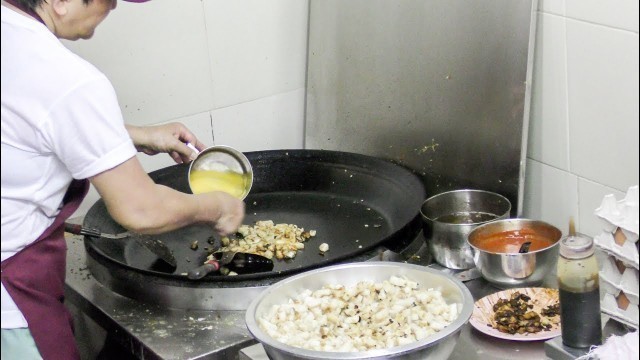

04:33
Feb 14, 2022
1
1
'This savoury carrot cake has no carrot, at least not of the orange variety. Instead, the core ingredients of the cake are rice flour and white radish which some call white carrot. The mixture is steamed, then cut into cubes and fried with garlic, eggs and preserved radish called \'chai poh\'. Commonly referred to as \'chai tow kway\' in the Teochew dialect, these smooth and soft fried rice cakes can be found in almost every hawker centre. It is served black (fried with sweet dark soya sauce) or white (original). The simple dish has its origins in Southern China’s Chaoshan province. There, it is known as \'chao gao guo\' (fried starch cake) which is made mainly with rice flour. Fish sauce and black sweetened soya sauce are used to marinate the rice cake before it is cut and fried with eggs, oysters and prawns. Brought over to Singapore by Teochew immigrants, it was known as \'char kway\' (fried rice cake), which was simply cubes of rice cakes fried with dark soya sauce. Teochew hawker Ng Soik Theng claims to be the first to have called this dish \'chai tow kway\' in the 1960s when she added white radish to it. Another hawker, Lau Goh, is said to have popularised the white version Built in 1983, Amoy Street Food Centre is a local culinary institution and their lunch crowd is a testament of that. The two-storey hawker centre on Maxwell Road is home to a wide range of stalls, hawking everything from curry puff to bowls of sliced fish soup. Six stalls from Amoy Street Food Centre were listed in the Michelin Guide 7 Maxwell Rd, Singapore 069111'
Tags: singapore , street food , chinese food
See also:


comments